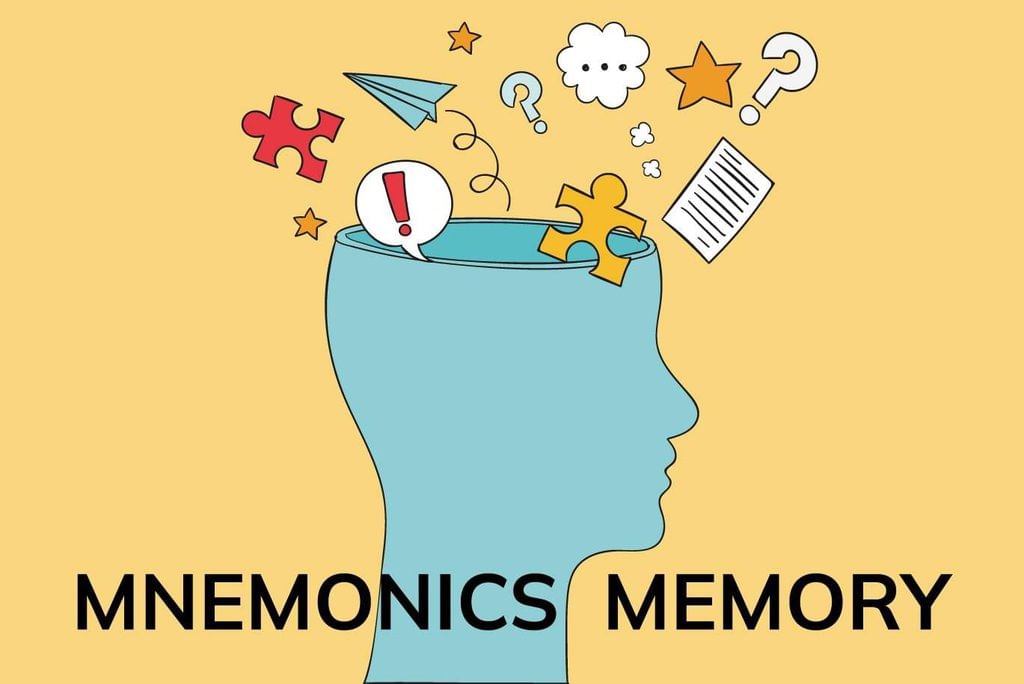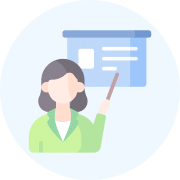Notes: Levels of Teaching | Teaching Aptitude for Teaching Exam - B.Ed Entrance PDF Download
| Table of contents |

|
| Levels of Teaching |

|
| Memory Level of Teaching |

|
| Understanding-Level of Teaching (ULT) |

|
| Reflective Level of Teaching (RLT) |

|
Levels of Teaching
Teaching is a focused activity that involves a relationship between a knowledgeable person (the teacher) and a learner (the student). The main aim of this relationship is to influence the student's behaviour.
Teachers work with students at three different levels, and it's important for them to take into account the developmental stage of their students to achieve educational goals.
Morris L. Biggie, in his book Learning Theories for Teachers (1976), indicates that teaching and learning can be seen on a scale from "thoughtless" to "thoughtful" methods. This scale helps clarify the teaching process.
Autonomous Development Level
- This level is student-centered.
- The teacher's role is mainly reactive, providing minimal guidance.
- Intellectual growth is viewed as something that naturally occurs, without formal teaching.
- Activities at this level include reading, attending lectures, and participating in discussions.

Guided Development Level
- This level is teacher-centered.
- The teacher's role is to guide the learning process by providing direction and support.
- Examples of activities include group work, where the teacher facilitates discussions and keeps students on track.

Supported Development Level
- This level is also teacher-centered.
- The teacher's role is to provide support and guidance to students.
- Activities at this level include one-on-one assistance, where the teacher helps students with specific challenges or questions.
Memory Level of Teaching
Proposed by Herbart, the Memory Level of Teaching focuses on the efficient memorization of factual material.
Good memory involves:
- Rapid learning
- Stable retention
- Quick recall
- Selective consciousness (bringing only desired information to awareness)
Key Aspects of Memory Level Teaching
- Learning: Acquiring the material.
- Retention: Keeping the material in memory.
- Reproduction: Retrieving the material when needed.
Teaching-Learning Process
- The process is based on a Stimulus-Response (S-R) model.
- Emphasizes the initial stage of teaching, where factual information is committed to memory.
 Objectives of Memory Level Teaching
Objectives of Memory Level Teaching
- The primary goal is to impart knowledge and information to learners.
- Knowledge acquired by learners is factual, obtained through memorization, and based on rote learning.
- Focuses on knowledge acquisition while allowing for the integration of higher-order skills later in the learning process.
- Teaching is centered around the subject matter.
- Simple and memorable concepts are taught to students.
- Subject material is organized and presented in a straightforward manner.
- Knowledge delivered is clear, structured, and observable.
Teaching Method:
- Teaching methods, which include drill, review, revision, and questioning, are primarily focused on the subject matter.
- Drill involves repetition or practice to achieve proficiency in memorising.
- Review or revising elements connect learners to new experiences and form new associations.
- Questioning is used to assess the achievement of knowledge-level objectives.
Teacher's Role:
- The teacher acts as a stage-setter, resource manager, and evaluator in the classroom.
Role of Learner:
- The learner's role is passive, as the teacher decides the subject content, teaching techniques, and methods.
- The learner's role is crucial in framing objectives, curriculum, selecting teaching-learning activities, and evaluation methods.
Teaching Equipment:
- Various teaching aids such as visual, audio, and audio-visual aids, models, charts, maps, pictures, TV, and radio stimulate curiosity in learners.
Nature of Motivation:
- Motivation should be intrinsic, driving students to learn better voluntarily.
- At the memory level of teaching, motivation is extrinsic, as students are compelled to learn through memorisation.
Evaluation System for Learners:
- Evaluation includes oral, written, and essay-type examinations based on predetermined objectives.
- Both oral and written tests assess students' memorisation abilities.
- Written tests involve short-type, recall-type, recognition-type, multiple-choice, and matching-type questions.
- Learners are encouraged to attempt the maximum number of questions.
Psychological Bases of Memory Level of Teaching
Jean Piaget proposed that the memory level of teaching is suitable for beginners who are in the pre-operational stage of cognitive development. This stage typically occurs during early schooling when learners are not yet capable of handling abstract concepts.
- At this stage, due to their cognitive development, children can grasp simple ideas, but they do not analyse their true meaning or nature. Generally, they are not expected to reflect on the facts they learn.
- According to Herbartian theory of apperception, young students begin to develop a greater awareness of themselves and their surroundings at this stage. Their brains are primed to absorb a vast amount of factual information, including concepts, elements, structures, models, and theories.
- Pavlov and Skinner contributed to the conditioning theory, which suggests that the right response from an individual is reinforced, aiding in long-term memory retention and facilitating future learning.
- Pavlov’s concept of classical conditioning is applicable in memory-level teaching, where thorough review or retrieval of information rewards correct learning by the student, ensuring retention for future use.

Suggestions For Memory-Level Teaching
- Objective and Practical: Teaching materials should be unbiased and serve a practical purpose.
- Limited and Gradual: Materials need to be finite in scope and progress from simpler to more complex concepts.
- Sufficient Teaching Aids: Teaching aids should be adequate, integrated, and presented in a logical sequence.
- Systematic Presentation: The subject matter must be presented in a systematic and organized manner.
- Ongoing Evaluation: Providing opportunities for formative assessments can help evaluate improvements in students' memory.
- Practice and Exercises: Retention of material can be strengthened through regular practice and exercises.
- Continuous Reinforcement: Offering chances for continuous reinforcement during instruction is beneficial.
Understanding-Level of Teaching (ULT)
- Definition: The understanding level of teaching, according to Morrison, goes beyond mere memorization. It emphasizes the mastery of a subject through a blend of memory and insight.
- Focus: This level aims to help students grasp general ideas, principles, facts, and their applications, with the goal of enhancing their thinking skills and cognitive abilities.
- Cognitive Development: Students experience a significant boost in their cognitive skills at this level. They become more proficient in critical thinking, logical presentation of facts, information analysis, and making inferences.
- Evaluation Skills: Learners develop the ability to evaluate the relationships between principles and facts, facilitating better information absorption.
- Objectives: Grounded in Bloom's Taxonomy, objectives include interpreting instructional messages through methods like illustration, classification, comparison, and inference. Application objectives emphasize using correct procedures, while the subject matter encompasses practical applications of principles and general ideas.

- Teaching Methods: Methods include lectures (with demonstrations), discussions, inductive and deductive approaches, as well as illustrations and explanations. Teaching aids such as models, charts, flashcards, and images support understanding.
- Classroom Climate: The classroom environment fosters motivation, ensuring active learner involvement. Motivation at this level derives from both internal and external sources.
- Evaluation: Evaluations comprise essay and objective questions, necessitating thorough assessments to gauge students' abilities in understanding, analysing, synthesising, and differentiating information. Practical knowledge assessment is also essential.
- Role of Teacher: The teacher plays a crucial role in presenting learning material, generating interest, and determining the sequence of content, instructional methods, and evaluation strategies.
- Role of Learner: Learners are more actively engaged at this level and are required to exert significant effort. They are considered secondary learners, with the teacher establishing the framework for their learning.
Reflective Level of Teaching (RLT)
- Highest Level of Teaching: The reflective level is considered the highest and most practical stage of teaching in certain educational systems. At this stage, society expects individuals to comprehend the entire situation and apply their knowledge effectively. Often referred to as the "introspective level," this stage requires deep contemplation and reflection.
- Thoughtful and Useful: This level is characterised by being very thoughtful and beneficial, with learners taking the initiative and teachers adopting a supportive role.
- Prerequisite Levels: The learner can only attain the reflective level after mastering both the memory and understanding levels.
- Real-Life Problem Solving: The emphasis at this level is on addressing real-life problems, where students encounter actual issues that require their attention.
- Open and Independent Environment: The classroom environment must be open and independent, fostering free thinking and exploration.
- Problem Identification and Solution: At this stage, problems are recognised, defined, and solutions are developed through original thought and skills.
- Democratic Teaching: Teachers should adopt a democratic approach, allowing students to discover knowledge autonomously.
- Active and Innovative Students: Students are expected to be active participants, utilising creativity and imagination in their problem-solving approaches.
- Evaluation: Evaluation is conducted through essay-type tests, along with assessments of attitudes, beliefs, and involvement.

Merits of Reflective Level Teaching:
- Learner-Centered: This teaching level prioritizes learners, promoting their active participation and engagement.
- Increased Interaction: There is a heightened level of interaction between the teacher and the learner, fostering a collaborative learning environment.
- Suitability for Higher Classes: This teaching level is appropriate for older students capable of critical thinking and problem-solving.
Demerits of Reflective Level Teaching:
- Mental Maturity: This level is mostly suitable for mentally mature children who can handle complex problem-solving tasks.
- Lack of Organisation: The study material at this level is neither organised nor preplanned, making it less systematic compared to other levels.

Cognition vs. Metacognition in Reflective Practices: Cognition involves various mental processes such as memory, attention, language comprehension, reasoning, learning, problem-solving, and decision-making. It is often described as the act of processing information, utilizing knowledge, and altering preferences. On the other hand, metacognition focuses on an individual's awareness and understanding of their own cognitive processes, representing a higher-level application of cognitive principles. While cognition pertains to basic mental functions, metacognition involves reflecting on those functions. Both concepts are interconnected in reflective practices, where individuals assess and improve their thinking and learning strategies.
|
27 videos|45 docs|11 tests
|
FAQs on Notes: Levels of Teaching - Teaching Aptitude for Teaching Exam - B.Ed Entrance
| 1. What are the three levels of teaching in education? |  |
| 2. How does the Memory Level of Teaching differ from the Understanding Level? |  |
| 3. What is the significance of the Reflective Level of Teaching? |  |
| 4. Can you provide examples of activities suitable for each level of teaching? |  |
| 5. How can teachers effectively implement these levels of teaching in their classrooms? |  |
















